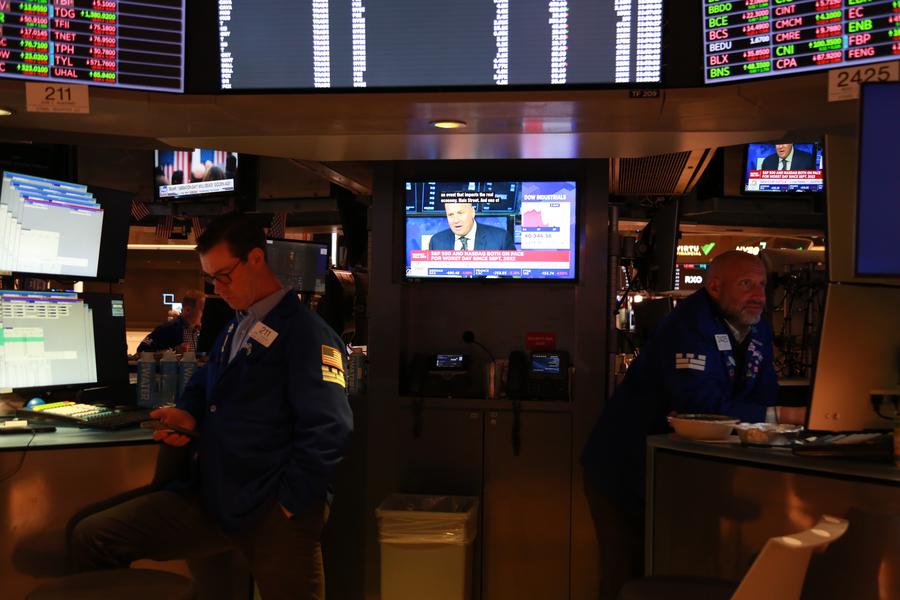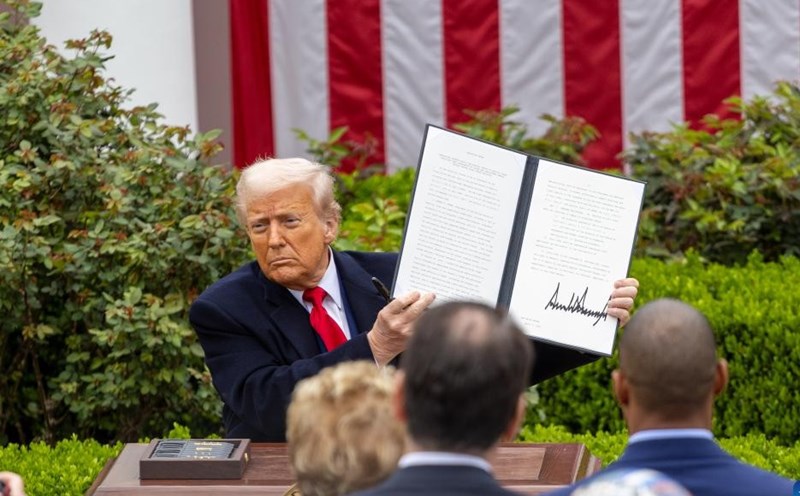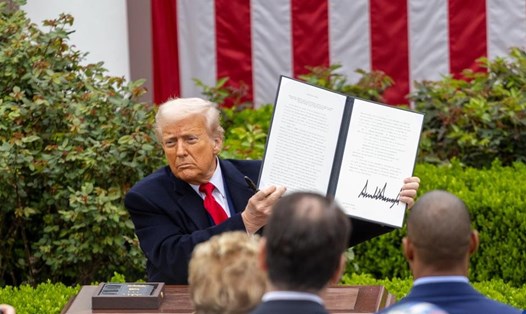Taxes on China are up to 125%
CNBC reported that at 0:01 on April 9, Eastern time (11:01 on April 9, Hanoi time), the US Customs and Border Protection Agency (CBP) officially implemented an import tax collection plan according to President Donald Trump's counterpart tax decree, applicable to 86 countries and territories worldwide.
CBP confirmed that it will collect a higher tax rate, specifically for each country and territory, ranging from 11% to 50%. The move marks the strongest escalation in Trump's "America First" trade policy since starting his second term.
Notably, China - the second largest trading partner of the US - will face a total tax rate of nearly 125%, including the taxes maintained since Mr. Trump's first term (about 19.3%) and a strong increase just announced by the White House on the afternoon of April 8 (104% - including a 50% additional rate and accumulated from the 20% tariffs applied since March and the 34% newly announced last week).
White House spokeswoman Karoline Leavitt said President Trump has imposed additional 50% tariffs on Chinese goods after Beijing failed to withdraw a plan to impose a 34% retaliatory tax on US goods on time. She emphasized: "Chairman Trump has a strong will, he will not back down."

Trade tensions flare up again
China's Ministry of Commerce immediately spoke out, criticizing the US action as a "missing mistake on the fault of the husband" and declaring that there would be appropriate retaliatory measures. Meanwhile, the US stock market reacted negatively: all three Dow Jones, Nasdaq and S&P 500 prices all turned to decrease in the afternoon of the same day.
According to CBP, before the new tariffs, the US had collected more than $4.8 billion in taxes on Chinese goods, more than $2 billion from Mexico and about $861 million from Canada - mostly within the framework of Trump's trade decrees from his previous term.
86 countries, territories and the EU in a "dream"
Not only China, dozens of other countries - including many of the US's long-time allies - will also be subject to new tariffs starting on April 9. These tariffs range from 11% to 50%, depending on the trade balance and the level of "ha-ha-ha-ha" in bilateral trade.
Although leaders of countries have held many phone calls with the US side in recent days to request a delay or adjustment of policy, Ms. Leavitt affirmed: "The president has no intention of delaying the plan".
However, the US remains open to bilateral negotiations. Mr. Trump has instructed the sales team to prepare tailor-made deals, not mass contracts, Leavitt said, but declined to give any specific deadlines for negotiations.

Risk of spreading to the global supply chain
The tax increase could dealt a heavy blow to the US manufacturing and consumer sectors, as affected items include toys, smartphones, computers and many other consumer electronics - most of which are still supplied by China.
In 2024, China will export goods worth $439 billion to the US, while the US will only export $144 billion to China. This imbalance is the basis for Mr. Trump to promote his "countervales tax" policy and the requirement to "go back and forth in trade".
However, experts warn that the simultaneous application of such high tariffs could trigger a global wave of retaliation, disrupting the supply chain and leading to direct consequences for the US labor market - where many businesses are dependent on components, raw materials and products from abroad.











